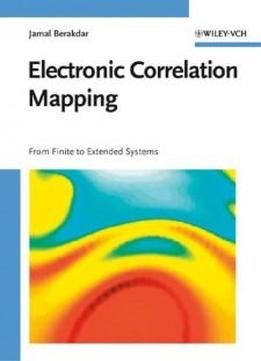
Electronic Correlation Mapping: From Finite To Extended Systems
by Jamal Berakdar /
2006 / English / PDF
8 MB Download
An up-to-date selection of applications of correlation
spectroscopy, in particular as far as the mapping of properties of
correlated many-body systems is concerned.
An up-to-date selection of applications of correlation
spectroscopy, in particular as far as the mapping of properties of
correlated many-body systems is concerned.
The book starts with a qualitative analysis of the outcome of the
two-particle correlation spectroscopy of localized and delocalized
electronic systems as they occur in atoms and solids. The second
chapter addresses how spin-dependent interactions can be imaged by
means of correlation spectroscopy, both in spin-polarized and
extended systems. A further chapter discusses possible pathways for
the production of interacting two-particle continuum states.
The book starts with a qualitative analysis of the outcome of the
two-particle correlation spectroscopy of localized and delocalized
electronic systems as they occur in atoms and solids. The second
chapter addresses how spin-dependent interactions can be imaged by
means of correlation spectroscopy, both in spin-polarized and
extended systems. A further chapter discusses possible pathways for
the production of interacting two-particle continuum states.
After presenting some established ways of quantifying electronic
correlations and pointing out the relationship to correlation
spectroscopy, the author addresses in a separate chapter the
electron-electron interaction in extended systems, and illustrates
the ideas by some applications to fullerenes and metal clusters.
The last two chapters are devoted to the investigation of the
potential of two-particle spectroscopy in studying ordered surfaces
and disordered samples.
After presenting some established ways of quantifying electronic
correlations and pointing out the relationship to correlation
spectroscopy, the author addresses in a separate chapter the
electron-electron interaction in extended systems, and illustrates
the ideas by some applications to fullerenes and metal clusters.
The last two chapters are devoted to the investigation of the
potential of two-particle spectroscopy in studying ordered surfaces
and disordered samples.
Throughout the book the material is analyzed using rather
qualitative arguments, and the results of more sophisticated
theories serve the purpose of endorsing the suggested physical
scenarios. The foundations of some of these theories have been
presented in a corresponding volume entitled "Concepts of Highly
Excited Electronic Systems" (3-527-40335-3).
Throughout the book the material is analyzed using rather
qualitative arguments, and the results of more sophisticated
theories serve the purpose of endorsing the suggested physical
scenarios. The foundations of some of these theories have been
presented in a corresponding volume entitled "Concepts of Highly
Excited Electronic Systems" (3-527-40335-3).











